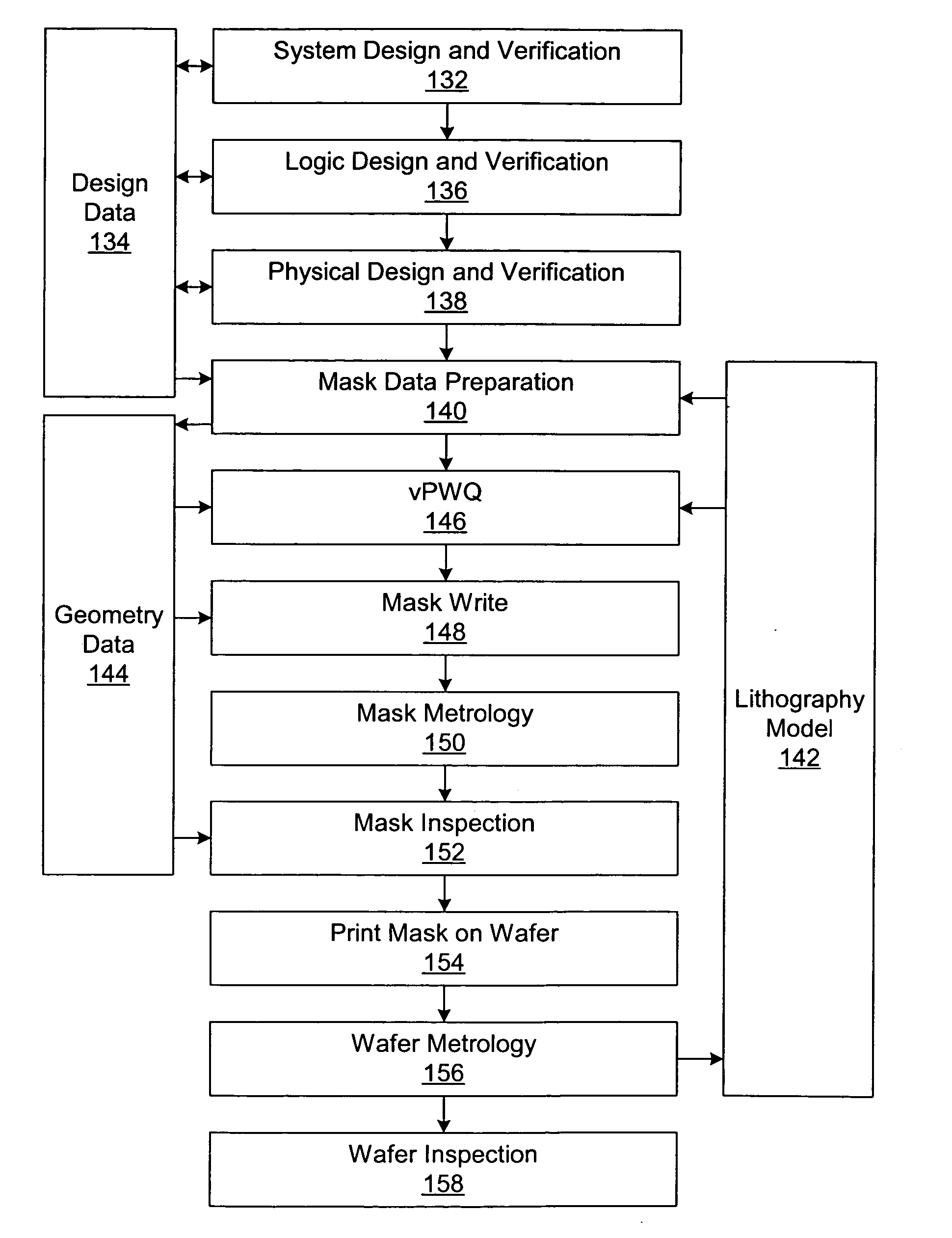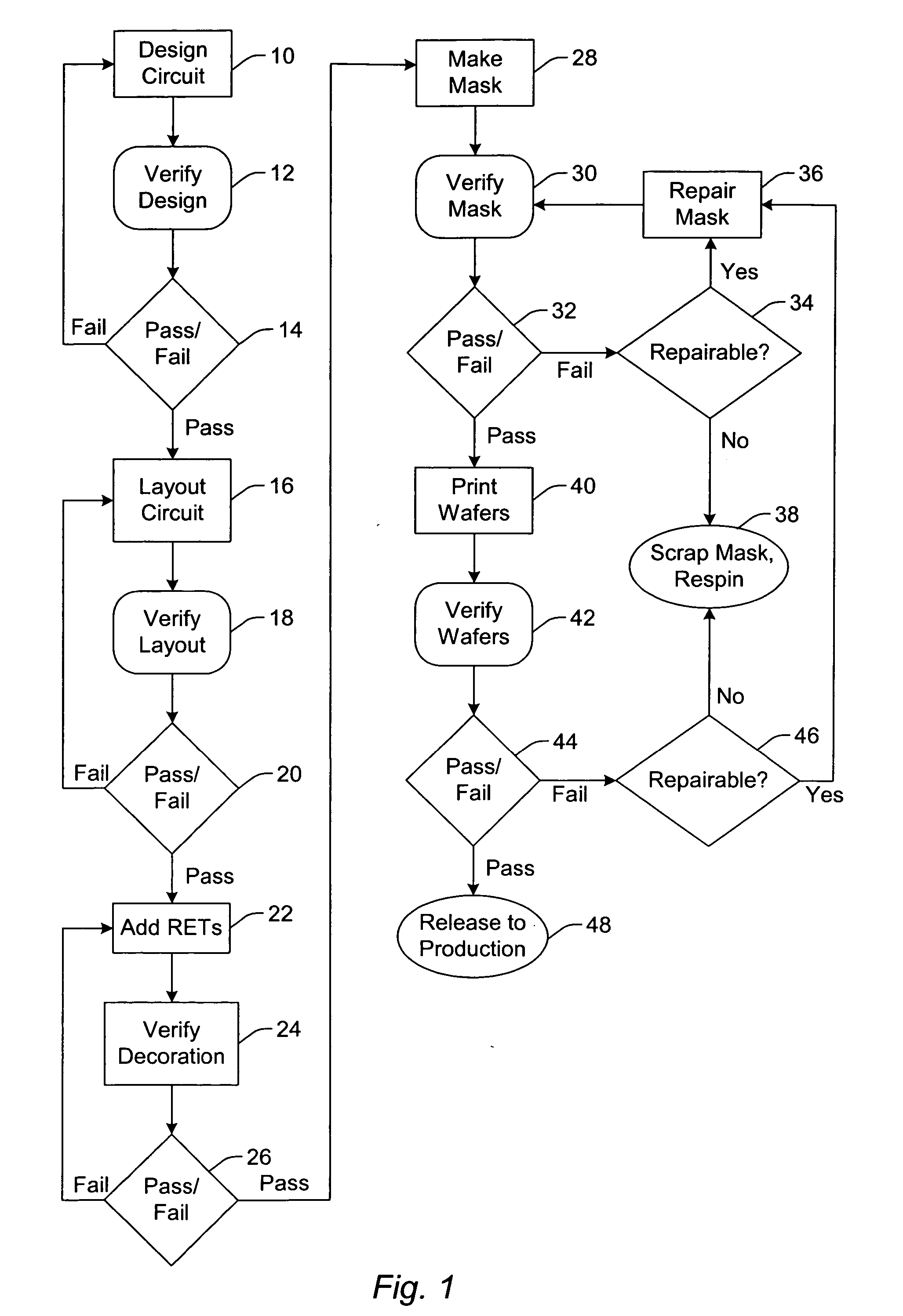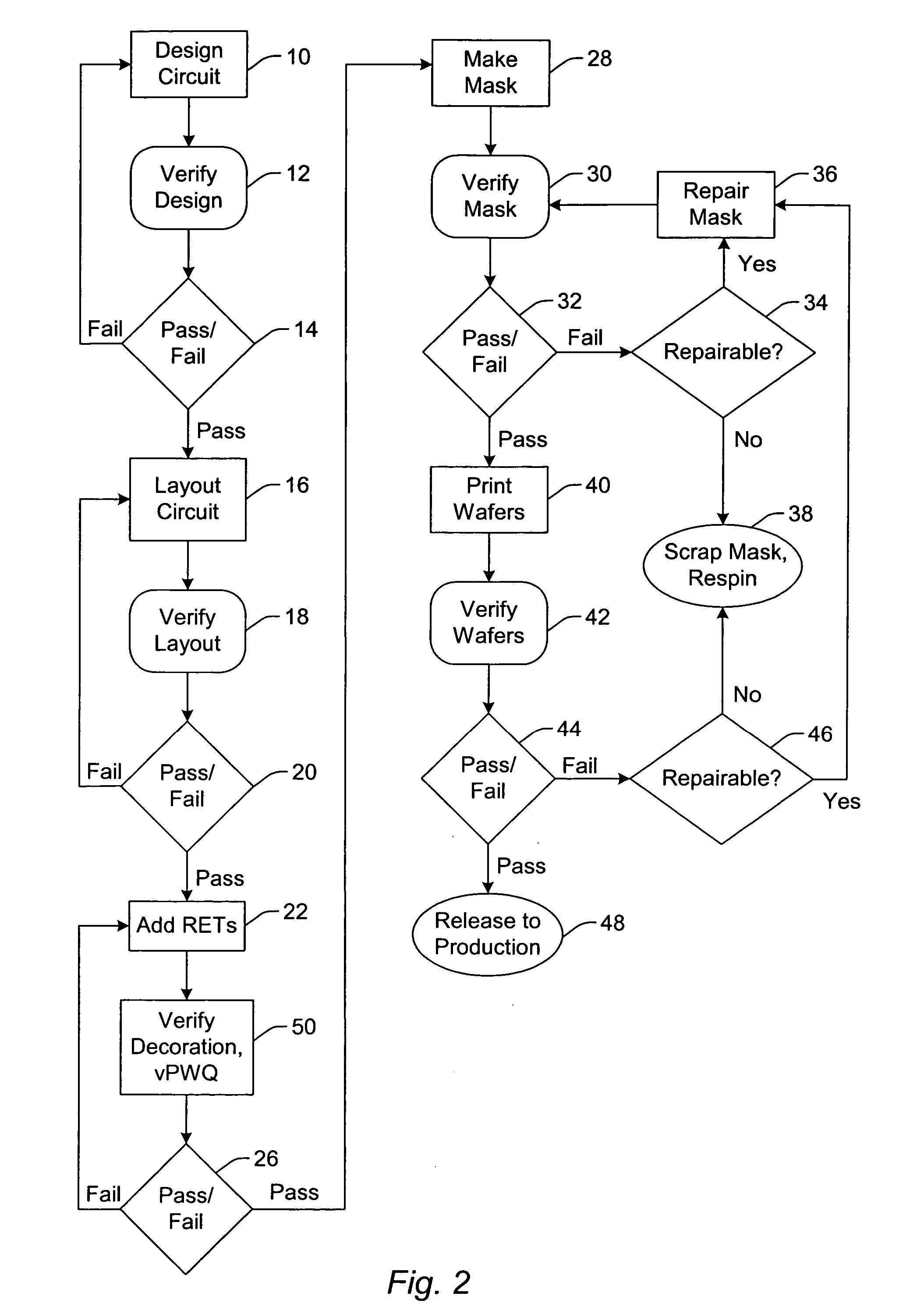Computer-implemented methods for detecting defects in reticle design data
a technology of design data and computer implementation, which is applied in the direction of fault response, instruments, photomechanical equipment, etc., can solve the problems of circuit decrease, defect or marginality in the features formed on the reticle becoming increasingly important, and the defect formed on the wafer during lithography may be particularly problematic for the integrated circuit manufacturing process
- Summary
- Abstract
- Description
- Claims
- Application Information
AI Technical Summary
Benefits of technology
Problems solved by technology
Method used
Image
Examples
Embodiment Construction
[0035] As used herein, the term “wafer” generally refers to a substrate formed of a semiconductor or non-semiconductor material. Examples of such a semiconductor or non-semiconductor material include, but are not limited to, monocrystalline silicon, gallium arsenide, and indium phosphide. Such substrates may be commonly found and / or processed in semiconductor fabrication facilities.
[0036] A wafer may include only the substrate. Such a wafer is commonly referred to as a “virgin wafer.” Alternatively, a wafer may include one or more layers formed upon a substrate. For example, such layers may include, but are not limited to, a resist, a dielectric material, and a conductive material. A resist may include any material that may be patterned by an optical lithography technique, an e-beam lithography technique, or an X-ray lithography technique. Examples of a dielectric material include, but are not limited to, silicon dioxide, silicon nitride, silicon oxynitride, and titanium nitride. A...
PUM
| Property | Measurement | Unit |
|---|---|---|
| defects | aaaaa | aaaaa |
| dimensions | aaaaa | aaaaa |
| critical dimension | aaaaa | aaaaa |
Abstract
Description
Claims
Application Information
 Login to View More
Login to View More - R&D
- Intellectual Property
- Life Sciences
- Materials
- Tech Scout
- Unparalleled Data Quality
- Higher Quality Content
- 60% Fewer Hallucinations
Browse by: Latest US Patents, China's latest patents, Technical Efficacy Thesaurus, Application Domain, Technology Topic, Popular Technical Reports.
© 2025 PatSnap. All rights reserved.Legal|Privacy policy|Modern Slavery Act Transparency Statement|Sitemap|About US| Contact US: help@patsnap.com



